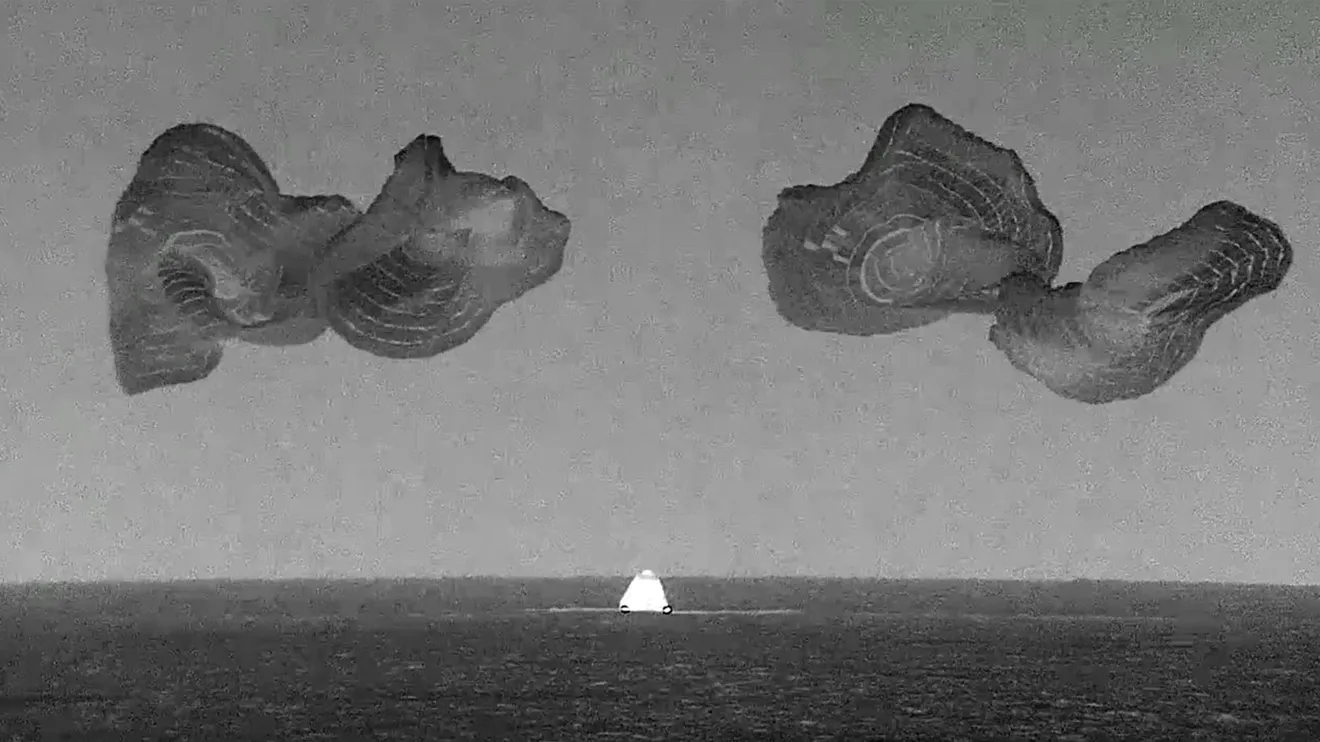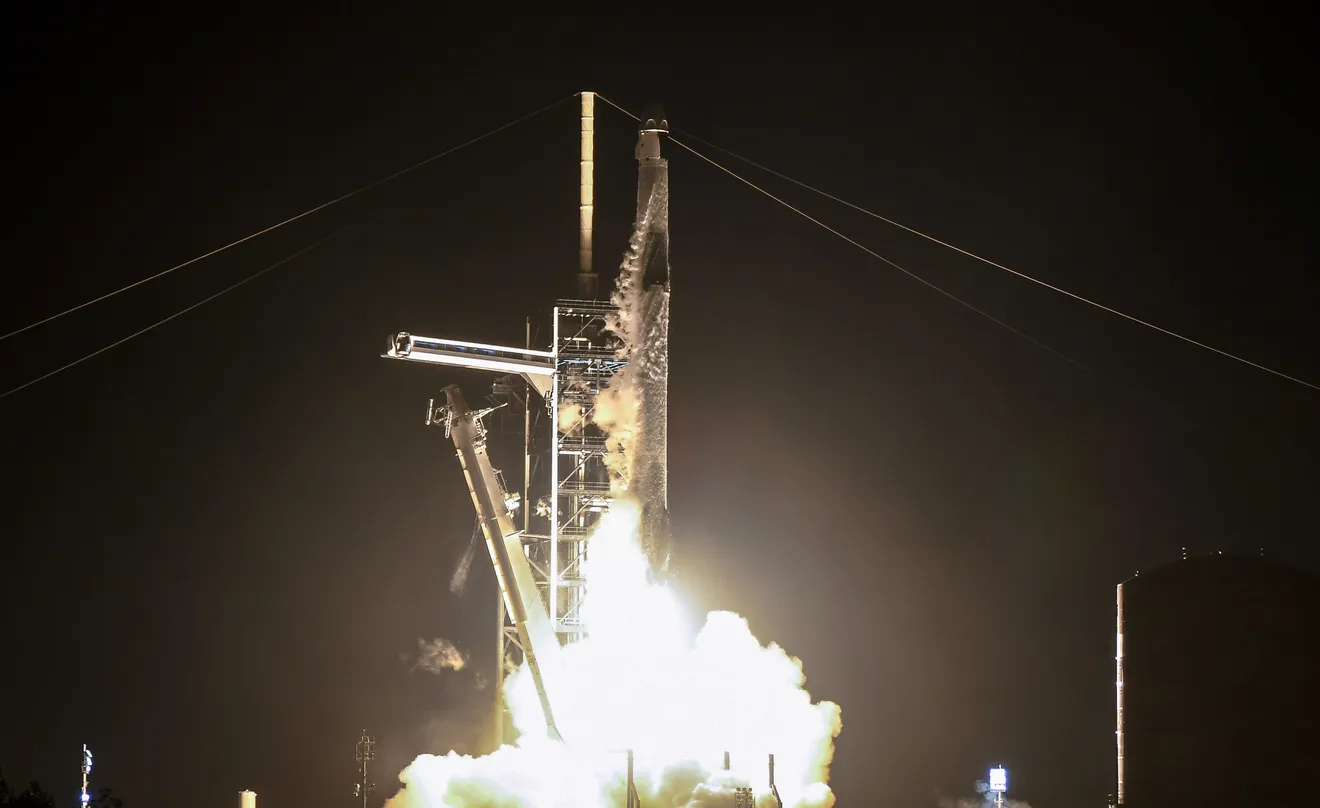The spacecraft landed in the ocean off the Florida coast on Sunday, ending a historic mission that featured the first-ever spacewalk by private astronauts.
A SpaceX Dragon capsule landed safely in the ocean off the Florida coast on Sunday, marking the end of a groundbreaking mission. During this mission, four astronauts reached new heights in orbit and completed the first-ever spacewalk by private astronauts.
The capsule and its crew landed near the Dry Tortugas in Florida at 3:36 a.m. ET on Sunday, according to SpaceX.
This was the sixth day of the Polaris Dawn mission, led by billionaire Jared Isaacman. The mission aimed to pave the way for future space travel.
When the Dragon spacecraft launched on Tuesday with a Falcon 9 rocket, it took the private astronauts farther into space than humans have been in over 50 years. Two days after the launch, Jared Isaacman and his crew made history by becoming the first non-professional astronauts to open their spacecraft’s hatch and experience the vacuum of space.
SpaceX President Gwynne Shotwell said on social media, “I’m very relieved to welcome you home. This mission was even more amazing than I expected.”
Though this mission is over, it’s just the first of three planned spaceflights in the larger Polaris Program.
SpaceX Dragon splashes down off Florida coast
The Polaris Dawn astronauts landed on Sunday in the ocean off the Florida coast, in the same SpaceX Dragon spacecraft that took them to space five days earlier.

After the Dragon spacecraft did a burn to start coming back to Earth, it flew over Florida before opening four parachutes to land in the water near Dry Tortugas, a small island about 70 miles west of Key West in the Gulf of Mexico.
Once it landed before dawn, a recovery team came to get the spacecraft and its crew. The capsule was then lifted out of the water and onto a recovery ship.
SpaceX made sure the weather was clear for the crew’s return to Earth.

Most crewed space missions send astronauts to the International Space Station, where their return to Earth can be safely postponed if needed. For example, this recently happened with the Boeing Starliner astronauts. The space station is well-stocked with supplies, and even unmanned spacecraft often launch to bring more supplies.
For the Polaris Dawn mission, the crew had to rely entirely on the oxygen and supplies they had stored on the spacecraft, which lasted about a week. Because of this, SpaceX waited several days for better weather to make sure the Dragon could safely return to Earth.

What Polaris Dawn astronauts accomplished
Isaacman, who started the internet company Shift4 Payments, arranged the mission with SpaceX and was the mission commander.

Isaacman led the team, which included pilot Scott “Kidd” Poteet, a retired U.S. Air Force lieutenant colonel, and SpaceX employees Sarah Gillis and Anna Menon, who were mission specialists. Menon, who also served as the crew’s medical officer, read a children’s book she co-wrote during the mission.

The four astronauts’ five days in space marked a new era in space exploration. Companies like SpaceX are now doing things that were once only done by space agencies like NASA. From the very start, the Polaris Dawn mission pushed the limits of what’s possible.
The launch sent the spacecraft up to 870 miles above Earth, which is higher than any crewed vehicle has gone since NASA’s Apollo missions ended in the 1970s. For Menon and Gillis, they are not only the first SpaceX employees to go to space but also the women who have traveled higher than anyone else in history.
The Dragon then reached a cruising height of 435 miles above Earth as the astronauts prepared for their next milestone: a historic spacewalk.

On Thursday, Isaacman and Gillis left the Dragon capsule to experience the vastness of outer space. Since all four crew members were exposed to the vacuum of space, they are all considered to be part of the first-ever spacewalk done by non-government astronauts.
The spacewalk aimed to test SpaceX’s new suits, designed to protect astronauts from radiation and extreme temperatures.
During the mission, the crew also tried out a new laser-based communication system with Starlink and conducted almost 40 scientific experiments. Many of these experiments focused on how the human body reacts to long spaceflights, which is important as NASA and other agencies plan missions to places like Mars.

What’s next for the Polaris Program

The Polaris Dawn mission was the first of three planned missions under the Polaris Program. Its goal was to test technology that could help make SpaceX founder Elon Musk’s dream of sending people to Mars a reality.
The second mission will focus on pushing the limits of future human space travel, improving space communications, and doing more scientific research. Details about the launch date and other specifics haven’t been announced yet.
When the third and final Polaris Program mission launches, it will be the first crewed flight on the SpaceX Starship rocket. This huge rocket, which has only been tested without people on board so far, will eventually be used to carry NASA astronauts from lunar orbit to the moon’s surface for NASA’s Artemis program.
In its latest test in June, the Starship reached orbit again and successfully landed in the Indian Ocean.

Elon Musk recently shared his plan for sending humans to Mars using Starship within four years, following an uncrewed mission to the Red Planet in 2026.
Before that can happen, SpaceX needs to make sure Starship can transport astronauts from lunar orbit to the moon, starting as early as 2026.
NASA is paying SpaceX $2.9 billion to develop Starship, which is the largest and most powerful rocket ever built, for its Artemis lunar missions. When Artemis III astronauts return to the moon for the first time since the Apollo missions ended in the 1970s, Starship will need to transfer them from NASA’s Orion capsule in lunar orbit and take them down to the moon’s surface.


